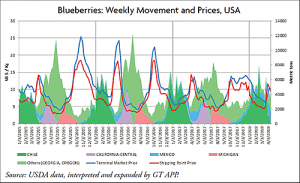Welcome to Blue Book!
Are you ready to join the thousands of companies who rely on Blue Book to drive smarter decisions? View our plans and get started today!
Still have questions? We’d love to show you what Blue Book can do for you. Drop us a line– we’ve been waiting for you.

Trade with confidence... every time.
Blue Book’s real-time alerts help you stay up to speed with everything in the produce industry

Trade with confidence... every time.
Blue Book’s real-time alerts help you stay up to speed with everything in the produce industry

Trade with confidence... every time.
Blue Book’s real-time alerts help you stay up to speed with everything in the produce industry

Trade with confidence... every time.
Blue Book’s real-time alerts help you stay up to speed with everything in the produce industry

Trade with confidence... every time.
Blue Book’s real-time alerts help you stay up to speed with everything in the produce industry

Trade with confidence... every time.
Blue Book’s real-time alerts help you stay up to speed with everything in the produce industry

Trade with confidence... every time.
Blue Book’s real-time alerts help you stay up to speed with everything in the produce industry
Blueberries heavily influenced by supply and demand
Blueberries are very sensitive to supply variations. The lowest prices occur in June and July. In June, California, Georgia, North Carolina, New Jersey, and Oregon fill the market,...
Blueberries are very sensitive to supply variations.
The lowest prices occur in June and July. In June, California, Georgia, North Carolina, New Jersey, and Oregon fill the market, and in July, supply comes from New Jersey, Oregon, Washington, and Michigan.

On the other hand, high prices occur during the U.S. low season in October and November, when supply comes from Argentina and Peru, and in smaller quantities from Mexico and Chile.
The second highest price level can generally be found in late April when Chile drops blueberry exports and before the U.S. season begins. This month is primarily supplied by Mexican blueberries. Chilean berries enter the U.S. market in greater amounts when prices start to drop from their highest after-season price.
Shipping point prices by port of entry show seasonal price trends, with Peruvian blueberries arriving in Philadelphia and New York with the highest prices in October ($15.02) and November ($9.00) in 2016, and in October ($11.28) and November ($14.95) in 2017. Argentina also earns high shipping point prices in October, shipping by air to the Los Angeles International Airport.
The second-highest shipping point price during the U.S. low season is received by Mexican imports in April: in 2015, prices rose to $10.13; in 2016, to $15.30; but in 2017 pricing fell to $11.25. Mexico generally benefits the most from high pricing in November and April.
Lowest prices occur during months of excess American supply from June to July (and August if harvest starts late). An example is Georgia, showing prices as low as $4.26 in June 2015, $2.40 in July 2016, and $3.93 in June 2017. Oregon and Washington also hit their lowest pricing in June and July but averaged 67 percent higher than Georgia.
Monica Gallo Riofrio earned an MBA from INCAE in Costa Rica and previously served as a price analyst. She is an agribusiness consultant and contributes her expertise to executive education programs.

News you need.
Join Blue Book today!
Get access to all the news and analysis you need to make the right decision --- delivered to your inbox.
What to read next
IFPA rallies industry to ‘Fight for Fresh’ at The Washington Conference
IFPA rallied members to champion public health, economic vitality, and global trade through the power of fresh at The Washington Conference.
CEA group calls for stable tomato market
Tom Stenzel, Executive Director of CEA Alliance, said members “strongly support renegotiation of the suspension agreement."
Five State coalition demands transparency on USDA’s farm wage rate determination
The GFVGA and the NCSC have assembled a five state, 30 organization coalition with the unified mission of filing a FOIA request with the USDA
Secretary Rollins signs SNAP waivers for three more states
Ag Secretary Brooke Rollins, joined by Secretary of HHS Robert F. Kennedy Jr., signed three new food choice waivers.
IFPA urges shift from fear to facts on produce and ‘Dirty Dozen’
In a statement, IFPA joined nutritionists and scientists in raising concerns about the Environmental Working Group’s latest publication.
California Giant forecasts strong Northwest blueberry season
The company forecasts increased volumes of both conventional and organic-grown blueberries from the Pacific Northwest.
Subscribe to our newsletter
© 2025 Blue Book Services. All Rights Reserved






